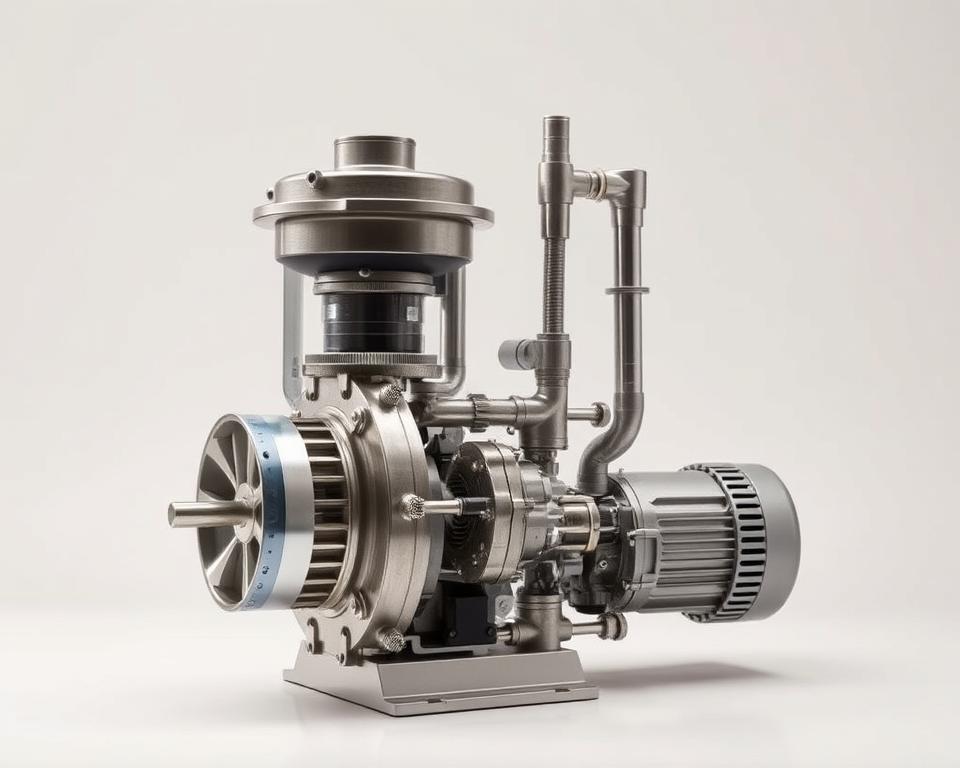RV Waste Tank Pumping: Vital Maintenance Advice
Imagine what happens when you ignore your RV’s sewer setup. Many RV owners find the idea of septic tank pumping daunting. Yet, recognizing the need for regular servicing is crucial. These steps preserve your camping joy and avoid expensive repairs. Learning proper waste disposal is key to your septic health. We’ll share vital insights on mobile RV septic pumping, including best practices and tips to keep your system running smoothly.
Getting to Know Your RV’s Waste Setup
Your RV includes tanks designed for different wastes. It consists of a black tank for toilet use, a gray tank for sinks/showers, plus a freshwater reservoir. Knowing these components prevents clogs and ensures efficient cleaning.
Drains and vents manage liquid and air movement throughout the system. A good grasp prevents clogs and nasty odors. This knowledge ensures hassle-free trips and reliable waste handling.
Maintaining clear, working tanks requires routine effort. Monitoring fill levels and dumping when needed keeps odors at bay. By maintaining your RV’s septic system properly, you’ll improve its lifespan and enjoy every trip more.
Why Routine Tank Pumping Matters
Frequent tank pumping keeps your system working and clean. Waste buildup triggers odors and backups that ruin outings. A full tank can produce embarrassing backups. Such mishaps kill the fun on the road.
Skipping pump-outs leads to pricey repairs. System failures cause leaks and wear out parts prematurely. Regular pumping ensures seamless operation. You’ll avoid nasty surprises and costly breakdowns.
Proactive servicing stops clogs. Investing in pump-outs shows you care about your RV. Your trips become more relaxing. By sticking to a dump schedule, you’ll relish the outdoors worry-free.
Finding the Right Dump Frequency
Determining dump intervals needs careful thought. Common guidance suggests a 3–5-day window. However, it shifts based on tank volume and number of users. Pinpointing the correct dump time is key for effective wastewater management.
Dump the black tank at about two-thirds capacity. It ensures good drainage and cuts down on odors. Ignoring it can cause backups and unpleasant odors.
Various factors influence dump frequency, such as
- Number of people on board
- Length of stay
- Type of waste generated
- Tank capacity
Planning is key to avoiding emergencies. Remember portable toilet service schedules. Tracking your usage helps forecast dump needs.
| Usage Scenario | Pumping Frequency |
|---|---|
| Weekend Getaway (2 people) | Every 3–4 days |
| Long Stay, Four to Six Occupants | Every 2–3 days |
| Seasonal Use, Two to Four Campers | Weekly or Bi-Weekly |
Keep a close eye on tank levels and your habits. Staying attentive guarantees a pleasant trip.

Best Practices for Dumping Your Tanks
Proper methods stop odors, clogs, and expensive repairs. Always empty the black tank first to protect the gray tank. It keeps gray water from mixing with solids.
Using a high-quality hose minimizes leaks and ensures smooth dumping. Tighten connections to stop spills. Once both tanks are clear, rinse the black tank thoroughly. This removes residue and preps the tank for next time.
Know where dump stations are located. Being prepared saves time on the road.
To summarize, use these steps:
- Empty the black water tank first.
- Use a top-quality sewer hose.
- Flush the black tank thoroughly after emptying.
- Plan your dump station locations.
Following these guidelines simplifies black tank maintenance.
Tank Handling and Upkeep Best Practices
Knowing proper tank use and maintenance is crucial. Maintain a bit of water in the black tank to aid waste decomposition.
Refrain from disposing non-biodegradable items. Use only RV-compatible paper. Inspect tanks often to catch problems early.
Adding treatments now and then improves septic service. These products balance enzymes and bacteria for efficient decomposition. Simple steps ensure smooth tank operation.
- Check for leaks and damage often.
- Apply RV-specific chemical treatments.
- Keep vents clear to avoid odors.
Following these rules protects your septic setup. You’ll enjoy more worry-free trips.
How to Pump Efficiently
Successful pumping requires precision and a clear procedure. Proper disposal prevents issues—only dump at approved stations. Know your tank’s capacity to avoid overflows.
Check tank indicators regularly to time pump-outs. This extends tank life and enhances trip comfort. Setting a dumping schedule improves system efficiency.
Rinse tanks thoroughly post-dump. It ensures each dump is cleaner than the last. By applying these strategies, you’ll maintain your RV’s condition and comfort.
Avoid These Septic System Errors
Maintaining your system is vital for uninterrupted camping. Insufficient flushing causes solids to accumulate. Adequate water use breaks down solids efficiently.
Flushing inappropriate items blocks pipes. Avoid non-dissolvable products like feminine hygiene items. They cause backups and costly service calls.
Leaving the black valve open too early is a mistake. Premature opening prevents a full flush. Only open when ready to empty for a complete clean.
Knowing these pitfalls helps maintain efficiency. Avoiding them keeps your waste management reliable.
Signs You Need Expert Help
Knowing when to hire pros preserves system health. Lingering smells can mean serious tank problems. Slow drains point to potential clogs or buildup.
Visible residue at dump points requires attention. It often calls for a deep professional clean. Experts use specialized tools to clear stubborn clogs.
Routine professional inspections catch hidden issues early. Acting on findings quickly prevents bigger problems. Hiring qualified technicians saves time and money long term.
Long-Term Maintenance for Your RV Wastewater Management
Smart upkeep ensures lasting system performance. Scheduled dumps preserve longevity and operation. Routine rinses clear residue and stave off expensive breakdowns.
Adopting sanitation routines protects your system. Inspecting connections stops leaks before they spread. Opting for biodegradable products protects plumbing.
Consider these long-term practices:
- Stick to a pump-out timetable.
- Rinse often to remove solids.
- Sanitize twice a year.
- Inspect parts frequently for wear and tear.
Proactive care delivers worry-free travel. Through consistent upkeep, you’ll enjoy travel free from waste worries.
The Bottom Line
Effective RV septic maintenance is crucial for a pleasant experience. Knowing system function and cleaning steps stops issues. Regular black tank maintenance improves efficiency. This makes your journey more comfortable.
Consistent inspections and care deliver trouble-free trips. This reliability supports every outing. Adopting these habits keeps your RV ready to roll. Thus, you can concentrate on adventures rather than septic concerns.


